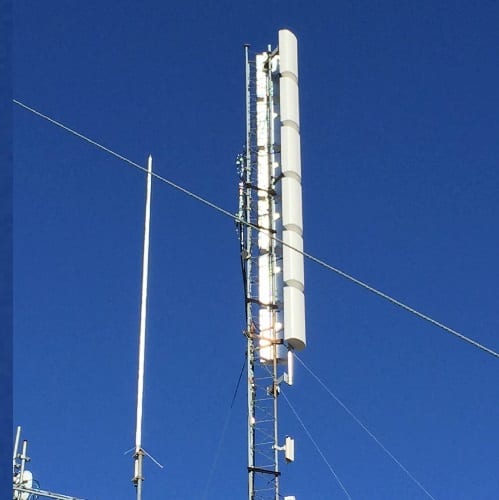Raymond, Maine (December 14, 2015) – Field tests of the next-generation ATSC 3.0 broadcast system during 2015 further validated the emerging standard’s potential to increase bandwidth efficiency, improve compression performance and expand the ability of broadcasters to reach more viewers with a greater range of content. The innovative engineering capabilities and broad product portfolio of Dielectric LLC are playing a significant role in these developments.
The ATSC 3.0 platform extends the use of existing high-power/tall-tower infrastructure to deliver television as well as other data services to new generations of portable devices. The consequences of this new standard, including the integral role of Single Frequency Networks (SFNs) and colocation of antennas, promise to significantly alter broadcasting technical components. The implications range from changing standard pattern and signal strength requirements to voltage stack-ups in OFDM systems and increased weight and wind loads from greater numbers of antennas competing for tower space.
In 2015, Dielectric contributed to several ATSC 3.0 initiatives, including the first end-to-end transmission of UHD High Dynamic Range (HDR) Scalable High Efficiency Video (SHVC) that was exhibited in Las Vegas by ONE Media to a South Korean broadcast delegation, followed by a ONE Media ATSC 3.0 SFN trial in Washington/Baltimore, as well as a VHF ATSC 3.0 trial in Cleveland supported by the Pearl TV broadcast technology partnership. As development of the standard continues, including a live demonstration planned for CES 2016, Dielectric is preparing for the future with adaptable, field-convertible antenna designs that anticipate next-generation requirements, including SFN antennas whose unique designs concentrate signal strength for robust service in selected areas within their coverage range.
Dielectric also has supplied mask filters to both the Washington/Baltimore and Cleveland trials, and has designed its products to meet the new constraints on filter voltage handling and thermal stability required by ATSC 3.0’s wider 5.7 MHz occupied bandwidth and higher peak to average power level. ATSC 3.0 is expected to become operational within the next decade, and Dielectric is designing the technology for that future right now.
About Dielectric:
Based in Raymond, Maine, Dielectric LLC is a wholly owned subsidiary of Sinclair Broadcast Group, Inc. Dielectric is a leading provider of innovative broadcast products. From remote stations to major markets, Dielectric has been delivering solutions for every need since 1942. Dielectric is an innovative, customer-centric organization with a long history of engineering excellence in designing and manufacturing high-quality broadcast solutions. The Company is a trusted partner of broadcasters worldwide. More information can be accessed at www.dielectric.com

